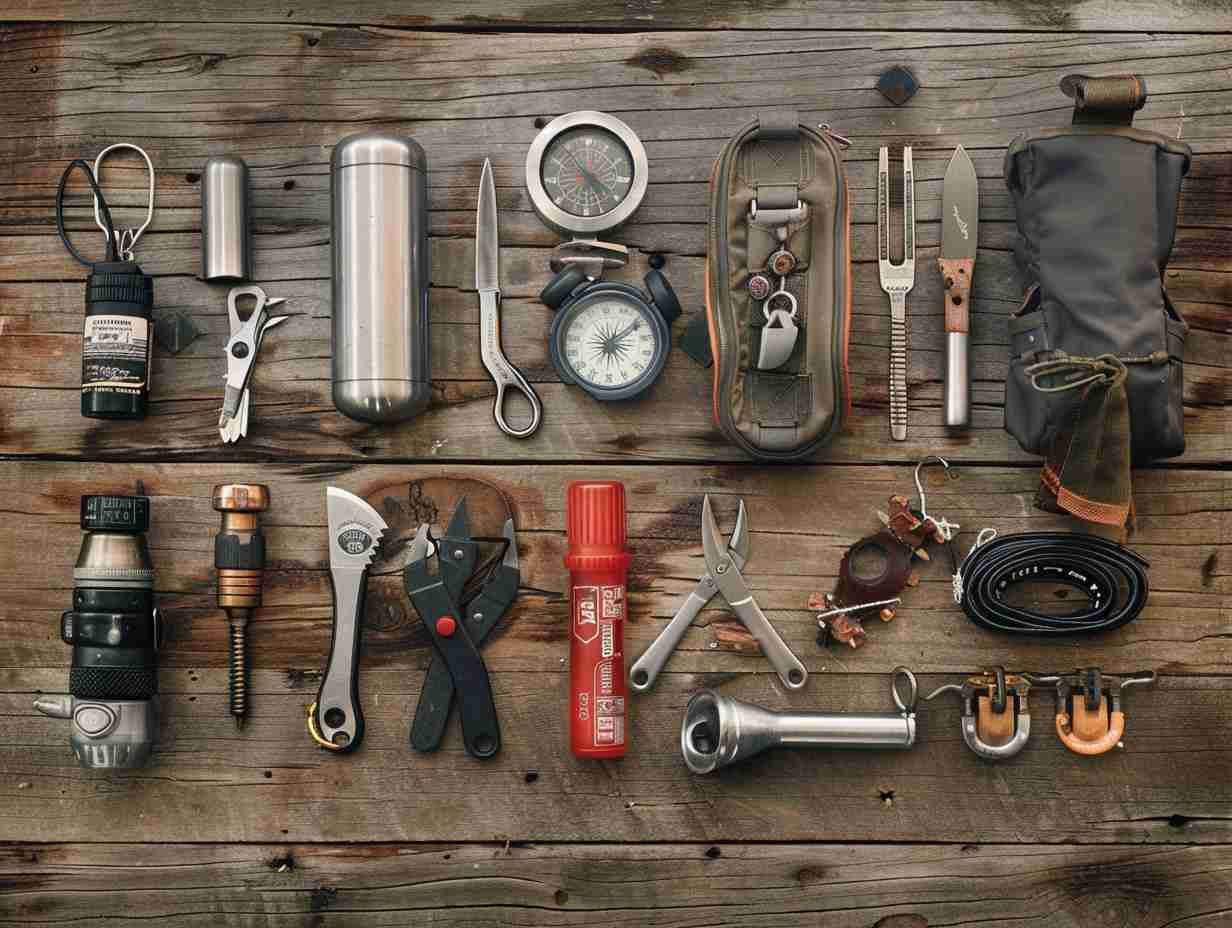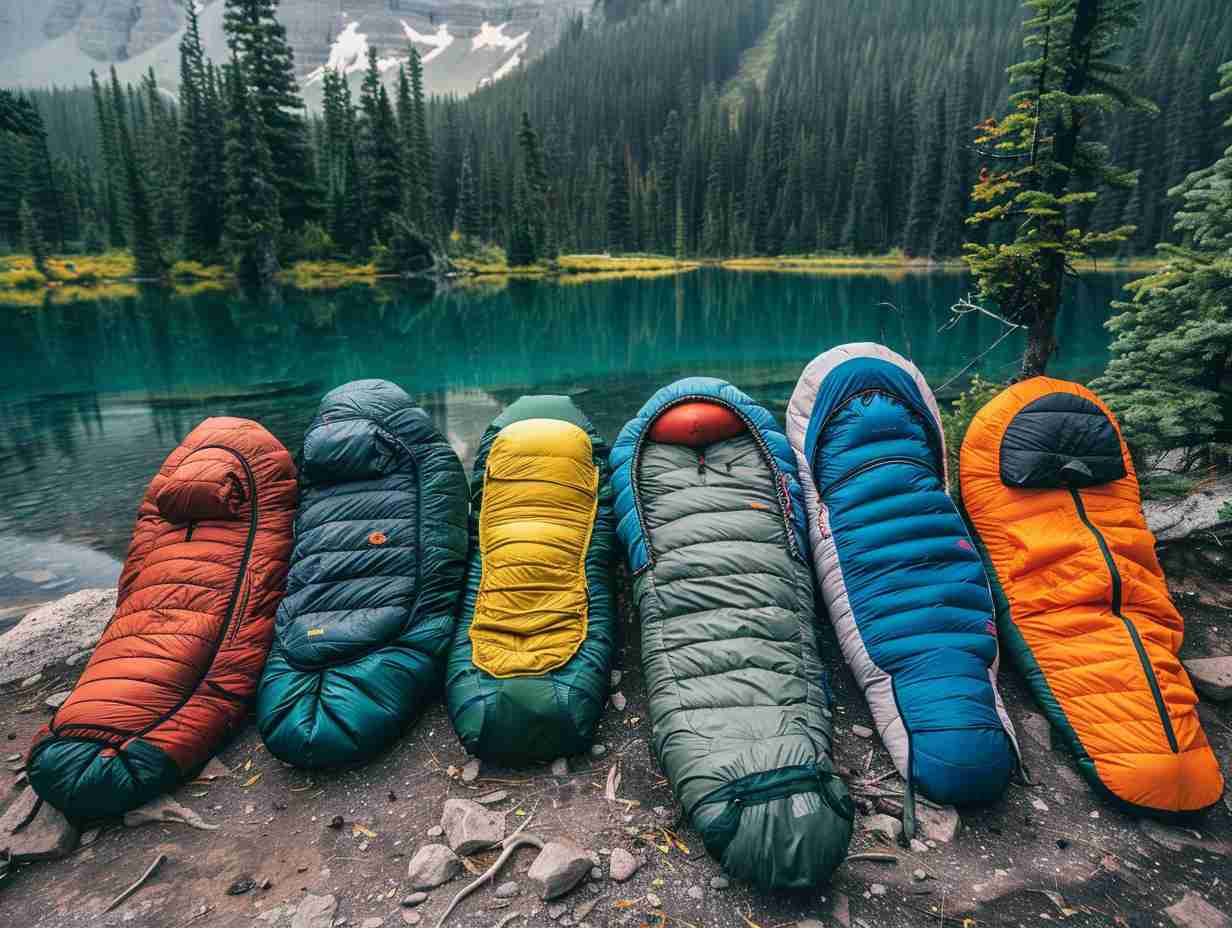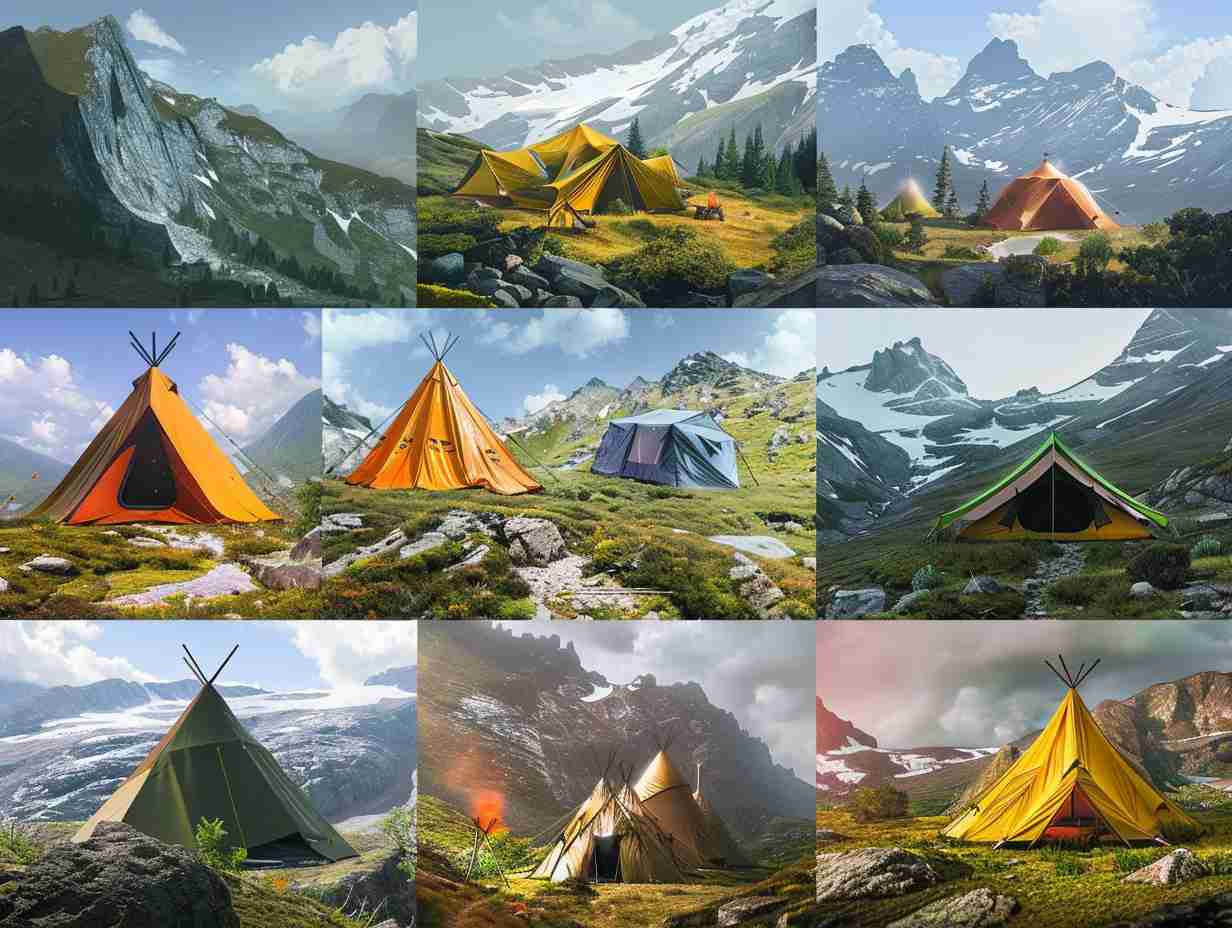
Survival Skills and Tools

When you’re out in the wilderness, preparedness is your best friend. Knowing how to procure clean water, start a fire in challenging conditions, and build a sturdy shelter can be vital skills to have in your survival repertoire. But what about the tools that can make your survival journey more manageable? From portable water filters to compact fire starters, these items can be lifesavers when things take a turn for the worse. Stay tuned to uncover more about the essential survival skills and tools that can make all the difference in a crisis.
Key Takeaways
- Carry a water filter or purification tablets for safe water consumption.
- Master fire starting with tools like matches, lighters, or ferrocerium rods.
- Learn basic first aid skills for medical emergencies in the wilderness.
- Utilize navigation tools like compasses and maps for direction finding.
- Use signaling tools such as whistles, mirrors, and smoke signals for rescue.
Basic Survival Skills
When facing the wilderness, mastering basic survival skills is essential for your safety and well-being.
One important skill is finding and purifying water. Always carry a portable water filter or purification tablets.
Knowing how to start a fire is another fundamental skill. Practice creating fire using various methods like a lighter, matches, or flint and steel.
Understanding how to signal for help is crucial in case of emergencies. Carry a whistle, mirror, or signal flares.
Additionally, learning basic first aid can save lives. Know how to dress wounds, perform CPR, and handle common medical issues.
These skills will empower you to navigate the wilderness confidently and handle unexpected situations effectively.
Shelter Building Techniques
To guarantee your safety and comfort in the wilderness, mastering shelter building techniques is essential. When constructing a shelter, consider the environment, weather conditions, and available resources. Here are some common shelter types and their advantages:
| Shelter Type | Materials Needed | Advantages |
|---|---|---|
| Lean-to | Branches, Leaves | Quick to build, Provides good wind protection |
| Debris Hut | Branches, Leaves, Debris | Offers insulation from cold, Rainproof |
| A-Frame Shelter | Branches, Tarp | Sturdy structure, Easy to set up |
| Tarp Shelter | Tarp, Rope | Lightweight, Versatile |
Fire Starting Methods

Mastering various fire starting methods is essential for survival in the wilderness, ensuring you can quickly and efficiently create a source of warmth and light.
One effective method is using a fire starter kit, which typically includes a ferrocerium rod and a striker. Rubbing the striker against the rod produces sparks that can ignite tinder.
Another reliable method is the bow drill technique, where you spin a wooden drill against a fire board until an ember forms.
Additionally, carrying waterproof matches or a lighter is a simple yet valuable way to start a fire quickly.
Remember to always have dry tinder and kindling ready to feed the flames once you have successfully sparked a fire.
Water Procurement Strategies
Wondering how to guarantee you can safely obtain water in the wilderness for your survival needs? When in a survival situation, knowing how to procure water is vital.
Look for natural water sources such as rivers, lakes, or streams. Remember to always purify any water you find before drinking it to avoid getting sick. You can use methods like boiling, chemical treatment, or portable water filters to make water safe for consumption.
If natural sources are scarce, consider collecting rainwater or dew using containers or improvised systems. Stay hydrated to maintain your energy and focus, as water is essential for your body to function properly.
Navigation and Signaling

Whether traversing dense forests or open terrain, understanding basic orientation techniques and signaling methods is essential for your survival in the wilderness. To navigate effectively, always carry a compass and map, and learn how to read them. Pay attention to landmarks, the position of the sun, and the direction of the wind to maintain your sense of direction.
In case you get lost, use signaling techniques like creating smoke signals, using a whistle, or flashing a mirror to attract attention. Remember that three of anything – three whistle blows, three fires, or three flashes of light – is a universal distress signal.
First Aid Essentials
To ensure your safety in the wilderness, understanding first aid essentials is crucial for addressing injuries or medical emergencies effectively. Here are some key points to remember:
-
Basic Wound Care: Clean and dress wounds promptly to prevent infection.
-
CPR: Learn how to perform CPR to aid someone in cardiac arrest.
-
Treatment for Shock: Keep the individual warm, elevate their legs, and seek medical help.
-
Burn Management: Cool the burn with water, cover it with a sterile dressing, and seek medical assistance if severe.
Being prepared with these first aid essentials can make a significant difference in handling emergencies during your outdoor adventures.
Food Foraging Tips

For effective food foraging in the wilderness, understanding edible plants and proper harvesting techniques is essential. When foraging for food, it’s important to correctly identify edible plants to avoid ingesting anything harmful. Here are some food foraging tips to keep in mind:
| Plant Name | Edible Parts | Harvesting Season | Caution |
|---|---|---|---|
| Dandelion | Leaves, Roots | Spring, Fall | Avoid roadside |
| Berries | Fruits | Summer | Check for molds |
| Nettles | Leaves | Spring, Summer | Use gloves |
| Acorns | Nuts | Fall | Requires processing |
| Wild Garlic | Bulbs | Spring | Distinct smell |
Tool Kit Must-Haves
Make sure your survival kit includes essential tools for various tasks in the wilderness. Here are four must-have items to include:
-
Multi-tool: A versatile tool that combines various functions like pliers, knives, screwdrivers, and more into one compact device.
-
Firestarter: Whether it’s waterproof matches, a lighter, or a fire starter rod, having a reliable way to start a fire is vital for warmth, cooking, and signaling for help.
-
Survival knife: A sturdy knife can help with cutting branches, preparing food, building shelters, and other essential tasks.
-
Paracord: This strong and lightweight nylon rope has multiple uses such as setting traps, building shelters, securing gear, and even as a makeshift fishing line.
Emergency Communication Devices

When venturing into the wilderness, equipping yourself with reliable emergency communication devices is essential for ensuring your safety and ability to call for help when needed. A satellite phone, for instance, can be a lifesaver in areas with no cell coverage. These phones use satellites to connect calls, enabling you to reach emergency services even in remote locations.
Personal locator beacons (PLBs) are another vital tool. When activated, they transmit distress signals and your location to search and rescue teams. Two-way radios are handy for short-range communication with your group or nearby hikers.
Prioritize these devices in your pack to stay prepared for any unexpected situations during your outdoor adventures.
Frequently Asked Questions
How Can I Protect Myself From Wildlife Encounters?
When encountering wildlife, stay calm, make noise to alert animals of your presence, avoid sudden movements, back away slowly, and never turn your back on them. Carry bear spray and learn about local wildlife.
What Are the Best Ways to Stay Mentally Resilient in Survival Situations?
When facing survival challenges, remember that resilience is your anchor. Embrace the power of positive thinking, focus on small victories, and lean on your inner strength. Stay adaptable, keep hope alive, and never give up.
Are There Any Specific Tools for Self-Defense in the Wilderness?
When exploring the wilderness, being aware of specific tools for self-defense is essential. Items like a sturdy knife, a reliable whistle, and pepper spray can provide you with added protection and peace of mind.
How Do You Handle Extreme Weather Conditions in the Wild?
When facing extreme weather conditions in the wild, you must seek shelter, stay dry, and regulate body temperature. Utilize natural resources, build a fire, and create insulation. Remember to stay calm, assess your surroundings, and prioritize your safety.
Can You Provide Tips for Finding and Purifying Water in Urban Environments?
You’re parched in the city? Find water by checking out public parks, fountains, and community centers. To purify, use a portable water filter or boil it. Stay hydrated, champ! Remember, hydration is key!
Conclusion
As you navigate the wild with your trusty tools and newfound skills, remember that survival is a dance with nature. Just as a compass points you in the right direction, your determination and knowledge guide you through the twists and turns of the wilderness.
Embrace the rhythm of the wilderness, let it be your teacher. With every step, you become more attuned to the song of survival, harmonizing with the world around you.
Disclaimer: Some information is provided through AI. Users should always conduct their own research and consult with qualified professionals before making any decisions.Affiliate information declaration: We may earn revenue from the products referred on this page and participate in affiliate programs.


